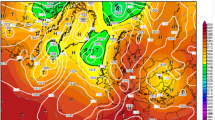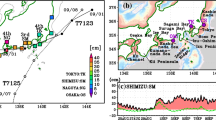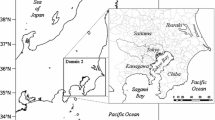Abstract
Observations from two SOund Detection And Ranging (SODAR) units, a 10 m micrometeorological tower and five Automated Surface Observing Stations (ASOS) were examined during several synoptic scale flow regimes over New York City after the World Trade Center disaster on September 11, 2001. An ARPS model numerical simulation was conducted to explore the complex mesoscale boundary layer structure over New York City. The numerical investigation examined the urban heat island, urban roughness effect and sea breeze structure over the New York City region. Estimated roughness lengths varied from 0.7 m with flow from the water to 4 m with flow through Manhattan. A nighttime mixed layer was observed over lower Manhattan, indicating the existence of an urban heat island. The ARPS model simulated a sea-breeze front moving through lower Manhattan during the study period consistent with the observations from the SODARs and the 10-m tower observations. Wind simulations showed a slowing and cyclonic turning of the 10-m air flow as the air moved over New York City from the ocean. Vertical profiles of simulated TKE and wind speeds showed a maximum in TKE over lower Manhattan during nighttime conditions. It appears that this TKE maximum is directly related to the influences of the urban heat island.
Similar content being viewed by others
Author information
Authors and Affiliations
Rights and permissions
About this article
Cite this article
Childs, P.P., Raman, S. Observations and Numerical Simulations of Urban Heat Island and Sea Breeze Circulations over New York City. Pure appl. geophys. 162, 1955–1980 (2005). https://doi.org/10.1007/s00024-005-2700-0
Received:
Accepted:
Published:
Issue Date:
DOI: https://doi.org/10.1007/s00024-005-2700-0




